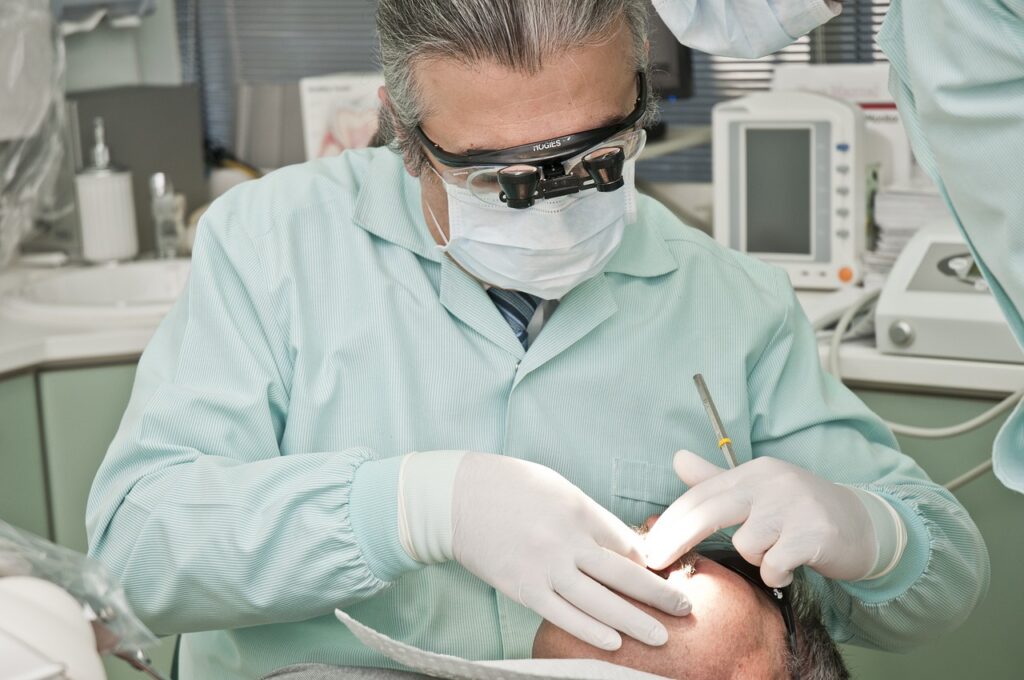Explore materials used in dental technology, from ceramics to biocompatible metals, enhancing precision, durability, and patient comfort in modern dentistry.
Introduction
Dental technology has evolved in various aspects and professions, merging to design, manufacture, and furnish prostheses, restorations, and appliances to fulfill all kinds of dental requirements. This branch applies science and technology for oral health, restoring aesthetics and function for persons who have lost teeth or had their teeth damaged through restorations.
Then, dental technology developed constantly with advances such as CAD-CAM, the digital revolution of 3D printing, and the advent of biocompatible material while increasing precision and efficiency and providing patient comfort in clinical applications. Well-trained dental technologists employ various materials and techniques to design individualized solutions for enhanced oral care and, thus, overall well-being.

What is Dental Technology?
Dental technology refers to the art and science in dentistry involved with designing, making, and maintaining dental prostheses, restorations, and appliances. The concern shared between dental technologists and dentists relates to the design and manufacture of these appliances that restore oral function and aesthetics to patients who either suffered from loss of teeth or had damage to them.
Types of Dental Technology
1. Prosthodontic Technology
Prosthodontic technology uses replacement materials to fabricate prostheses that restore the forms and/or functions of teeth previously lost in whole or in part, complete and partial dentures, crowns, and bridges.
2. Orthodontic Technology
From looking at it, in technical terminology, this is called dental technology: the science about how an orthodontic appliance such as braces, retainer, or aligner is made to repair a malocclusion, function better, or just ensure that the aesthetic appearance of a patient’s teeth would be improved.
3. Maxillofacial Technology
Maxillofacial technology concerns, especially with the composition of prostheses constructed for those who lost their facial structures due to trauma, congenital disabilities, or diseases like cancer and other known diseases. These prostheses would be individualized, as a result, about restoring the patient’s appearance and quality of life.
4. Implant Technology
That is what mediates dental implants: artificial tooth roots that are inserted surgically. The technicians design the crowns and abutments that are attached to the implants so that they look natural and fit securely.
Materials Used in Dental Technology
- Ceramics: The ceramics comprised would dominate the most vast ocean of tooth technology and are mainly developed or utilized for crowns, veneers, and bridges, whose similarity with dentin and enamel, as well as endurance, make them one of the most useful materials for aesthetic restorations. Biocompatible, stain resistant, and able to withstand chewing forces are other advantages.
- Metals: Many dental frameworks, implants, and high partial dentures are formed using precious metals, titanium, and cobalt-based alloys. Their properties of high strength and durability, paired with corrosion resistance, make them best qualified for clinical use and applications where a high-stress environment will be sustained.
- Acrylic Resins: Acrylic resins, most often used as denture bases, temporary crowns, and orthodontic appliances, are usually lightweight, well-characterized, and cheap materials. They can, however, wear over time and are not as durable as other materials.
- Composites: Dental composites are used in fillings, bonding, and some restoration. These are materials made of resin and filler particles, giving a more natural look and versatility. They have quite a good bond with tooth structure, which is why it is a material of choice for minimally invasive procedures.
The Importance of Dental Technology
Dental technology is a pivotal factor in modern dentistry that makes customized treatments that improve oral health and patient satisfaction. Improved capabilities for dental professionals to restore function, correct alignment, and enhance aesthetics. With its advancement in technology, the field, therefore, enhances the efficiency of the treatment and precision and comfort of use for the patients.
Key Points About the Importance of Dental Technology
- Precise Diagnosis: Digital and advanced dental technologies such as 3D scans assist in the accurate diagnosis of oral health issues. Such accuracy affords the dentist early intervention in the management of the problem and takes appropriate action toward good clinical-aided outcomes for the patient.
- Minimally Invasive Procedures: These are modern instruments such as lasers and CAD/CAM systems. They make it possible to have minimally invasive treatment procedures and focus on the healthy structure of the tooth for a shorter period of recovery with considerably less discomfort and a better experience for the individual.
- Improved Patient Comfort: Other innovations include digital impressions, pain-free injections, and ergonomic tools for enhanced comfort for patients during dental appointments. This promotes regular check-ups and aids in good oral health.
- Better Patient Education: Dental technology, which includes intraoral cameras and 3D models, aids patients in visualizing and comprehending their conditions and treatment options. This fosters informed decision-making and encourages active participation in their oral care.
Advancements in Dental Technology
- CAD/CAM Technology: CAD and CAM have changed dental restorations into incomparable precision and unassisted task efficiency. This technology is one-time used for the preparation of crowns, bridges, and veneers, thus cutting the wait time as well as improving accuracy inserts.
- 3D Printing: By rapid production of models, surgical guides, crowns, and dentures, 3d printing has changed the dental lab. This reduces cost, speeds up processes and provides hyper-customization for many patients.
- Digital Impressions: It replaces plaster molds with more accurate and much more comfortable impressions. Technology will result in better-fitting restorations, less discomfort for patients, and greater efficiency in the design process.
- Biocompatible Materials: These innovations, including zirconia and lithium disilicate, have eluded all material properties regarding higher strengths, aesthetics, and biocompatibility. Therefore, longevity and aesthetics are improved for restorations, and a better prognosis for satisfaction is provided to customers who pay for restoration services.
The Role of a Dental Technologist
A dental technologist creates prostheses especially suitable to patients as custom-made crowns, bridges, dentures, or orthodontics. Many materials such as ceramics, metals, and acrylics can be used for prosthetics within the mouth. They can even resort to using advanced digital scanning methods or CAD/CAM technology to improve the efficiency and precision of their work.
Cons of Dental Technology
1. High Costs
Conversely, advanced technologies in dentistry require expensive investments in equipment and software for maintenance purposes. Costs can be quite onerous to smaller clinics, preventing them from being on par with big clinics that are more capable of purchasing high-end innovation.
2. Learning Curves
Learning to use new dental technology takes time and effort. For dentists and their staff, the modernization process requires continuous updating of skills to use modern tools efficiently necessary step that can disrupt workflow and halt productivity, especially during the initial stages of introducing new systems into offices.
3. Technical Challenges
Devices and software related to dentistry can fail, become incompatible, or collapse. Technical issues result in delays in patients’ care and many more inconveniences for dental professionals. In most cases, they call for extremely expensive repairs or IT support to fix the issues.

FAQs
How long does it take to create a dental prosthesis?
Prosthesis being of different complexities, we can say that time varied from type to type. While bridges and crowns would generally take a few days to a week, dentures or implants would take several weeks.
Is dental technology safe?
Yes, modern dental technology incorporates biocompatible materials and advanced techniques to ensure the safety and comfort of patients.
Are dental restorations permanent?
Dentures are long-lasting but not permanent. With proper care, the life of these restorations may last for anywhere between 10-15 years or more.
Conclusion
Dental technology is very important in modern dentistry. It combines traditional history and craftsmanship with computer technology to provide appliances that restore and maintain oral health. From crude dentures to sophisticated digital solutions, dental technologists keep on innovating and thereby improving patient experience and clinical outcomes. The field shall grow with technology to develop even more effective and attractive dental solution versions.






